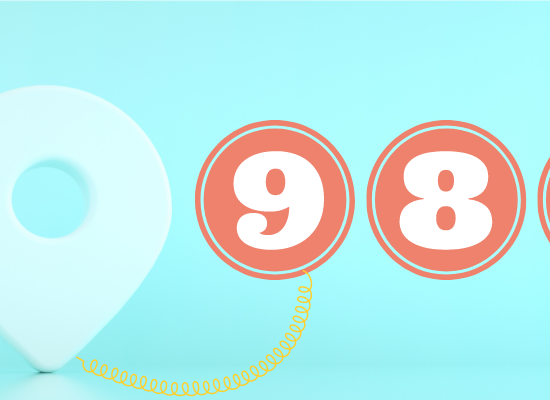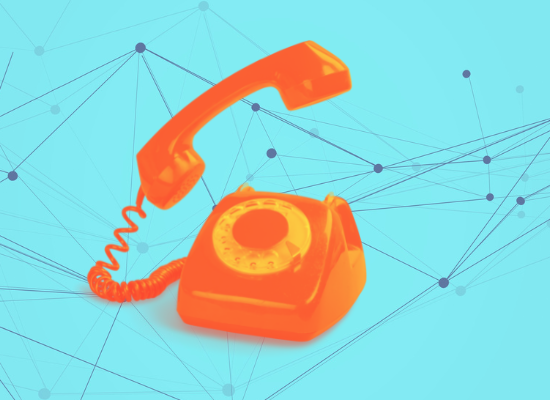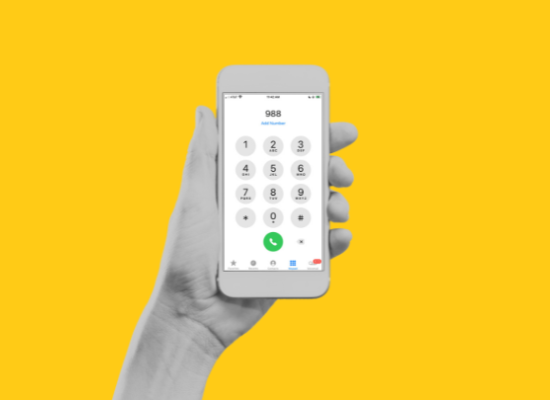
Stephanie Hepburn is a writer in New Orleans. She is the editor in chief of #CrisisTalk. You can reach her at .
It’s November 22, 2014, in Cleveland, Ohio. A man at a park dials 911 and tells call taker Constance Hollinger, “There’s a guy with a pistol.” “It’s probably fake, but he’s pointing it at everybody.” He says the person is on a swing just outside the Cudell Recreation Center and “probably a juvenile.” Three separate times, the 911 caller points out the weapon might not be real.
After seeing Hollinger’s electronic notes on the call, dispatcher Beth Mandl puts out a code one, the highest priority emergency for police. Over the radio, she tells the officers: “In the park by the youth center, there’s a black male sitting on the swing. He’s wearing a camouflage hat, a gray jacket with black sleeves. He keeps pulling a gun out of his pants and pointing it at people.” There’s no mention the subject may be a child playing with a fake gun.
Officers Timothy Loehmann and Frank Garmback arrive on the scene, and within two seconds of getting out of the vehicle, Loehmann shoots Tamir Rice in the abdomen, a twelve-year-old with a toy gun. Rice dies the next day. The medical examiner Thomas Gilson rules his death a homicide.
There was no indication the call taker entered critical clarifying details into the computer record, says Rebecca Neusteter, P.h.D., executive director at University of Chicago’s Health Lab. “The information should, at a minimum, have included the skepticism the caller shared, noting, ‘This might be a kid with a toy, proceed with caution.’”
Because Hollinger never entered them in the system, Mendl never knew these details and thereby couldn’t pass them along to the officers. County Prosecutor Timothy J. McGinty said in a statement that police radio personnel errors “were a substantial contributing factor to the tragic outcome.” “Had the officers been aware of those qualifiers, the training officer who was driving might have approached the scene with less urgency,” said McGinty. “Lives may not have been put at stake.”
Dr. Neusteter points out it’s impossible to know what would have happened that day had the officers been aware the “guy” at the park may have been a kid playing. “They might have approached the situation slower, more carefully, and more thoughtfully,” she says.
We may also never know why Hollinger didn’t log those vital details—her attorneys advised her not to tell investigators. However, Dr. Neusteter says the case highlights long-standing problems within the 911 system, ones she hopes states will learn from as they stand up and strengthen their 988 crisis centers. The three-digit number for mental health, substance use, and suicide emergencies must be live by July 16, 2022.
Like many other emergency call centers, Cleveland’s dispatch process is reminiscent of the children’s game Telephone. The caller says their reason for calling, the call taker tells the dispatcher, and then the dispatcher tells the officers what the caller said. In many jurisdictions, points out Dr. Neusteter, a third person is in the mix. “There’s often an operator who determines if the call requires police, fire, or EMS,” she says. “They then transfer to the call taker who inputs the notes that a dispatcher intercepts to deploy resources and connect with responders through Computer Aided Dispatch and/or the radio.”
These multistep processes can hinder accuracy and response time. For example, in Parkland, Florida, a two-step reporting system might have caused fatal delays in police response to the 2018 shooting at Marjory Stoneman Douglas High School, where Nikolas Cruz killed 17 people and injured 17 others. Parkland relied on Coral Springs for 911 service, but the primary police provider is the Sheriff’s Office.
Pinellas County Sheriff Bob Gualtieri, chairman of the high school’s public safety commission, told the South Florida Sun-Sentinel that every cell phone call from the high school went to Coral Springs’ communications center. The center had to transfer the calls to the regional communications center, who then conveyed the information to the deputies. “Was that a factor in this? Yeah, absolutely it’s a factor,” said Gualtieri.
The 911 system, says Dr. Neusteter, creates ample opportunity for blind spots—those inherent to the current 911 process and others shaped by systemic and personal biases. “The nature of the call taker role is to hear one person’s perspective of a situation and to treat it as though it’s true,” she says. “But we know that so many 911 calls are motivated by people’s biases.” “The system won’t change without sufficient quality assurance measures and clear guidance and training around race equity and inclusion.” Efforts, she notes, that must be at the forefront of 988 planning, so the same mistakes aren’t repeated.
The all-purpose 911 emergency system was built in the late 1960s to quell disorder and functions in an authoritarian way, says Dr. Neusteter. It was a reaction to what President Lyndon B. Johnson’s administration viewed as “harmful civil disorder — namely, protests by Black communities against segregation and police brutality,” wrote Katrina Feldkamp, an education attorney, and Dr. Neusteter in In These Times.
“When a person dials 911,” says Dr. Neusteter, “they’re enlisting representatives of the state to intervene in people’s lives. How the 911 system works is how it was designed.”
From its inception, many 911 calls were non-emergency. For instance, when 911 launched in New York City on July 1, 1968, calls for a law enforcement response spiked by 40%. Over half were for non-emergencies. “Today, much like yesterday,” notes Dr. Neusteter, “we’ve allowed people with privilege and power to use 911 to enforce their notion of disorder, giving them control over people who aren’t harmful but who they feel uncomfortable around, often based on discrimination.” People who call 911 aren’t necessarily calling for themselves but about other people who they think have “something wrong with them” or who they deem “don’t belong.”
American society doesn’t just turn to law enforcement to be the default mental health provider but to solve any and all problems, points out Dr. Neusteter. “Many of which,” she says, “would be better-addressed by investment in foundational supportive services in the community.”
The ethos behind 988 is to rapidly match people to services in the community and divert those experiencing mental health, substance use, and suicide crises from a traditional 911 response, which in most places funnels people in crisis to the emergency room and jail. People experiencing a behavioral health crisis are at high risk of death during a police interaction. According to the Washington Post’s police shooting database, 23% of people killed by police were identified as having a mental illness.
How 988 will increase call volume to Lifeline member call centers depends on marketing and to what degree the 911 emergency system and first responders divert to the new three-digit number. However, notes Dr. Neusteter, figuring that out is tricky because less than 5% of 911 calls are flagged as behavioral health concerns. “That’s not to say other calls aren’t or don’t have behavioral health components, but that’s not how people call them in,” she says.
The system, as is, directly responds to the person who is calling, asking for assistance, and identifying “the problem,” which affects how 911 calls are classified. When law enforcement digs deeper into noise, domestic disputes, and trespassing complaints, they might find that the call subject is experiencing a behavioral health crisis. “However, calls aren’t flagged that way,” says Dr. Neusteter. “And so from the onset, it’s frequently unclear what the subject of the call may need.”
Often 911 call classification codes are both over- and under-specific. For instance, call takers and responders may have hundreds of codes to choose from to classify a call, yet the system doesn’t adequately allow for nuance and detail. Dr. Neusteter worked in a jurisdiction with 150 call-taking codes where the most frequently used code was ‘other.’
“When people have too many options, they might as well have none because it’s too hard to make a decision, particularly in emergency settings where call takers have to move quickly.”
Last year, Dr. Neusteter and her former colleagues at the Vera Institute of Justice released a multicity 911 analysis where they evaluated inter-rater reliability to determine whether two call takers would be likely to classify calls in the same way. They found that the answer was no. The researchers listened and classified audio calls according to dispatcher guidelines and training materials and then compared how they coded the calls to how the call takers did. “In most cases, the call codes didn’t match up,” she says.
The reason why is multifold — there’s insufficient standardization and telecommunicator professionalization, and there is no feedback loop to help improve the existing system. Dr. Neusteter says both 911 and 988 systems need to have a method for first responders — including mobile crisis teams — and service providers to update details in the systems after a warm handoff. “It allows call centers to provide better care and services to the person,” she says, “and retool the systems from both technological and social perspectives, allowing us to truly understand people’s needs and whether or not we’re meeting them.”
Emergency 911 call takers face tremendous occupational stress, yet the job comes with low pay, few benefits, and, because of how they’re classified, telecommunicators have little influence within the 911 emergency system. “They don’t even have a distinct occupational title,” notes Dr. Neusteter. One throwback to the 1960s is that the system still classifies call dispatchers as administrative clerical assistants. “This holdover is detrimental to the call takers and dispatchers themselves,” she says, “and diminishes their role within the strict hierarchical public safety structure.”
On May 25, 2020, Jena Scurry, a Minneapolis 911 dispatcher, alerted Sgt. David Pleoger when she saw security footage of officers pinning George Floyd to the ground for so long, she thought the live feeds had frozen. “My instincts were telling me that something’s wrong,” Scurry testified at the trial of Derek Chauvin, a former police officer convicted of murdering Floyd.
When Scurry called Sgt. Pleoger, she began by saying, “You can call me a snitch if you want to,” before voicing her concerns.
Scurry testified it was outside the scope of her duties to call the Sgt. to report use of force incidents. Her job, she said, is “mainly all listening.” She also stated she’d never made a call to report use of force before. In doing so, points out Dr. Neusteter, Scurry had to go above those who outranked her: the officers themselves.
Dr. Neusteter says 988 crisis call centers and funders will need to keep call takers in mind. “They’ll need to think about professionalization, staffing, and the occupational stress 988 telecommunicators will experience,” she says. A combination of staff, volunteers, and student interns answer Lifeline calls, and call centers must adjust to a multitude of different schedules. Additional volume demands from 988 might strain the existing patchwork of coverage and, potentially, the call takers themselves.
At present, crisis center call counselors experience a diversity of calls, ranging from requests for basic information and referrals to helping someone at imminent risk of suicide. While that won’t change with 988, the volume and percentages may, depending on how a community markets the system. “If call intensity increases for volunteers,” says Dr. Neusteter, “but professionalization remains absent, we’re replicating and compounding the harm to call takers that we’ve seen in the 911 system.” High stress and low or no pay result in rapid burnout, turnover, and a less experienced workforce.
Funding is also a perpetual challenge for the 911 emergency system, but telecom service taxes give the illusion to communities that the system is sufficiently supported when, in fact, it’s not. “People see the 911 tax show up on their monthly telecom bills and think it’s a fully funded system,” says Dr. Neusteter. However, states have been known to divert 911-E911 funds. “Many states look at service fee tax revenues as piggy banks, putting their PSAPs in a difficult position.”
Each year, the FCC puts together a report on state collection and distribution of 911 and enhanced 911 fees. The 2019 report’s key findings reveal that five states—Nevada, New Jersey, New York, Rhode Island, and West Virginia—diverted and transferred 911-E911 fees for other purposes. Some of the states used the funds for non-public safety or unspecified uses. The total amount diverted by all reporting jurisdictions was $200,194,031.31, roughly 6.6% of all collected 911-E911 fees. Without ample oversight and forced guidance, Dr. Neusteter foresees this might also be an issue for the new 988 system if state 988 service tax revenues face similar siphoning.
True diversion from 911 will require monitoring, standardization, and an adequately funded 988 crisis system. “The federal government, states, and communities need to invest in the necessary infrastructure,” she says, “to ensure there are appropriate responses.” If not, 911 and law enforcement will remain the default mental health provider.
Newly launched alternative lines have provided a historical precedent for Dr. Neusteter’s concerns. For example, when New York City introduced 311—a non-emergency number where people can find out about local services, make complaints, or report issues—nearly a million more calls were dispatched immediately to police, without any reduction in 911 calls or deployments. “It was the same response just by way of another number,” says Dr. Neusteter, who did internal analyses of the 311 to 911 calls when she served as director of research, policy, and planning for the NYPD.
This is reminiscent of what happened with the launch of 911 in New York in 1968, where non-emergency calls spiked, and so too did a law enforcement response. “Early 911, 311, and other alternative lines give evidence for caution, and sometimes pause, about how to proceed with lines like 988,” says Dr. Neusteter. “I do think these challenges are resolvable but require forward-thinking planning and funding to avoid replicating the past.”









